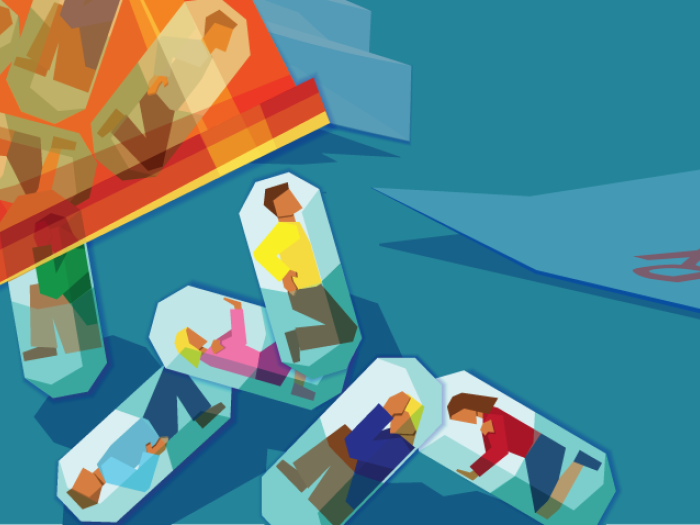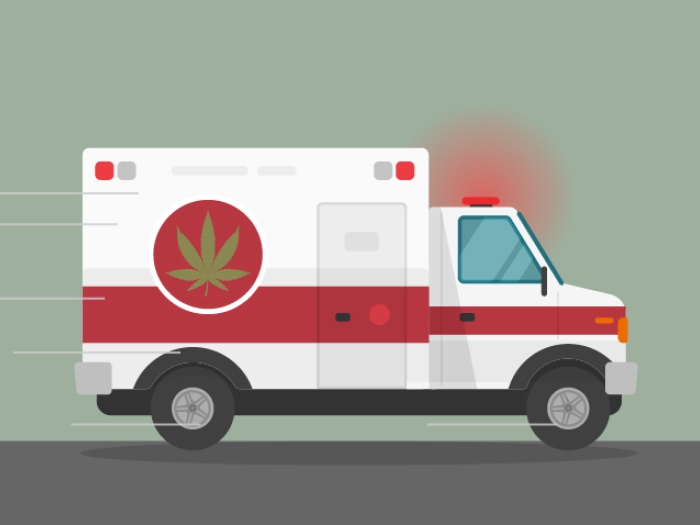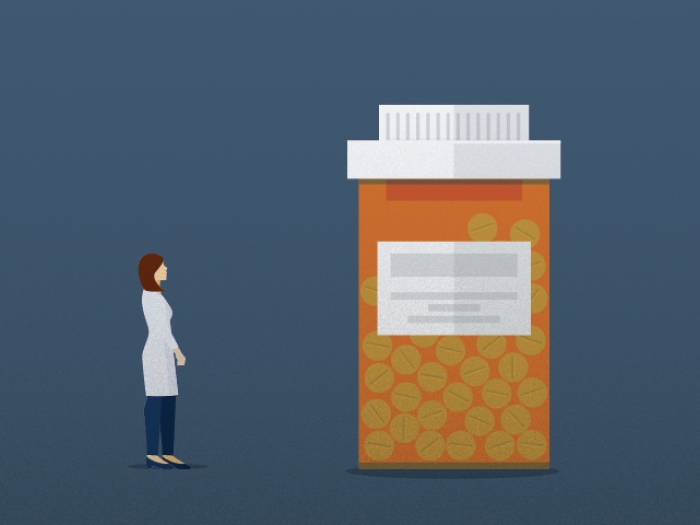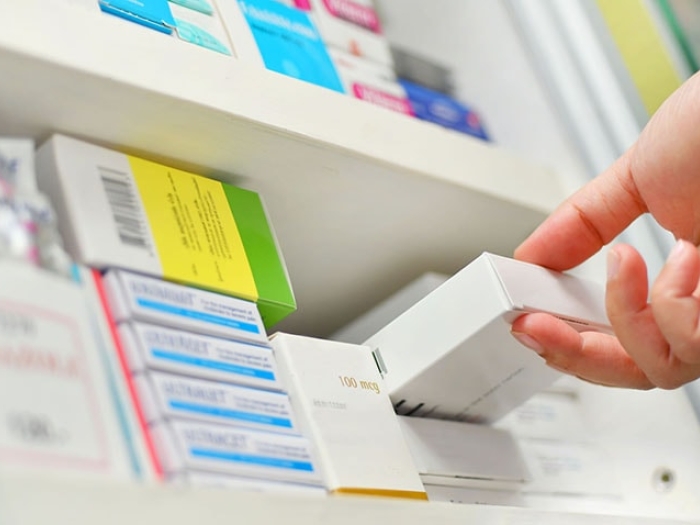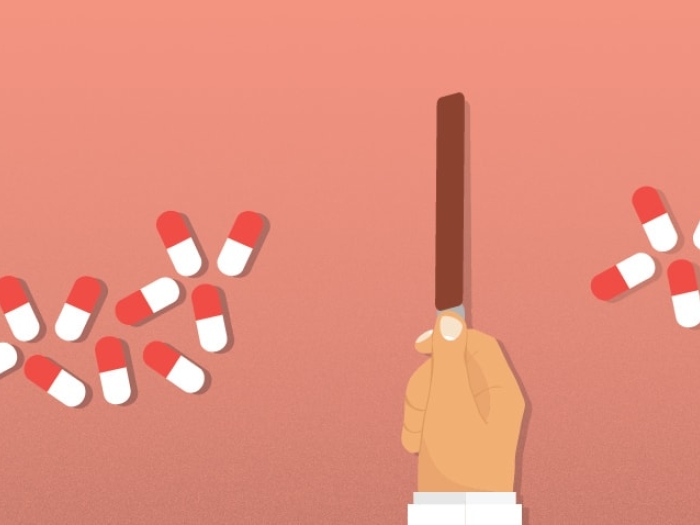A new study shows promise in preventing risk-taking that could lead to pain pill overdoses.
4:05 PM
Author |
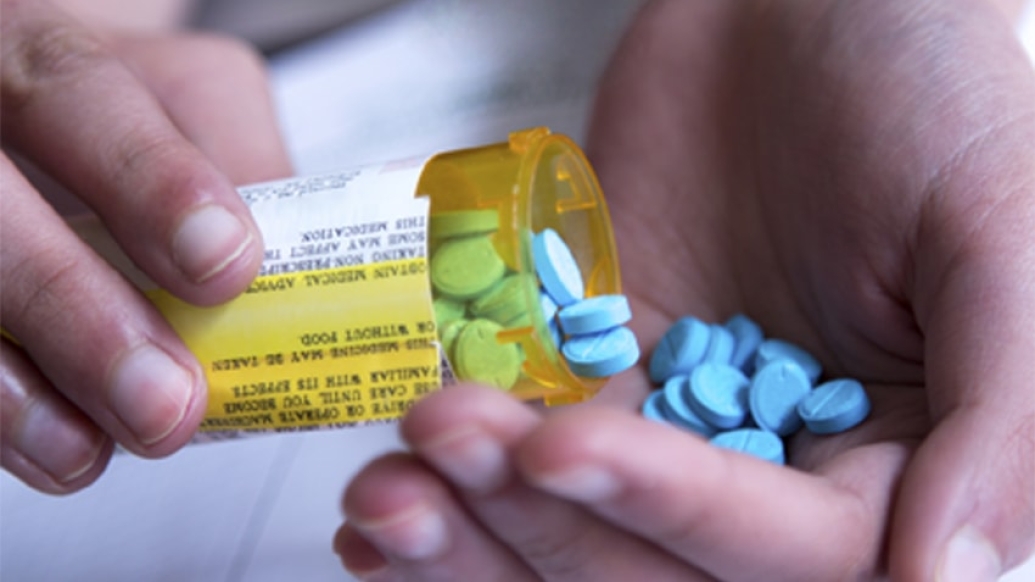
As America battles an epidemic of deaths from misused pain pills, a new study suggests an inexpensive way to cut risky use of these drugs by individuals who have a high chance of overdosing.
And it could happen exactly where many patients get those drugs in the first place: the emergency room of their local hospital.
Just a single half-hour session with a trained therapist during an ER visit was enough to motivate people who misused prescription opioid painkillers to reduce their use, as well as their riskiest behaviors, the study finds.
Over the six months after their ER visit, they were less likely to use the drugs in a way that was inconsistent with a prescription, or in ways that could lead to an overdose. Meanwhile, misuse and risky behavior didn't drop as much in a comparison group of similar patients over the same time.
The results were published online in the journal Drug and Alcohol Dependence.
"It's very promising that we see a reduction in risky behavior with this brief, one-time intervention among people who weren't seeking treatment for their opioid use, but had a history of nonmedical use of these drugs," says lead researcher Amy Bohnert, Ph.D., an assistant professor of psychiatry in the University of Michigan Medical School. "Further research is needed to understand if this leads to longer-term impact on health."
Bohnert is a member of the VA Center for Clinical Management Research, the U-M Injury Center and the U-M Institute for Healthcare Policy and Innovation. The research was done as part of a major project run by the U-M Injury Center and funded by the Centers for Disease Control and Prevention.
Motivating users to change
The therapists used a technique, called motivational interviewing, which has been shown to help people reduce their use of tobacco, drugs and alcohol, or to lose weight. Some clinics and hospitals already offer it to help motivate patients to change their behavior, and some insurance companies cover it.
But this is the first time it has been studied in a randomized controlled trial specifically to reduce risk for overdose. More than 200 people participated, and most of them connected with the researchers six months after their ER visit.
Motivational interviewing helps people understand the risk that their drug use poses to them, and the factors that can increase that risk, such as drinking alcohol or taking certain other drugs such as benzodiazepines, while they are on pain medications.
It also uses standard techniques such as open questions about knowledge and behavior, affirmation of knowledge or intentions to change, and strategic reflection to help individuals increase their desire and commitment to behavior change.
Although the study was just a pilot project, the results are so encouraging that the researchers are hoping to launch a larger study of the technique.
It's very promising that we see a reduction in risky behavior with this brief, one-time intervention among people who weren't seeking treatment for their opioid use.Amy Bohnert, Ph.D.
Why the emergency department?
Bohnert and her colleagues, including senior author Maureen Walton, MPH, Ph.D., conducted the study in a single emergency department, but one that draws a wide range of patients from urban, suburban and rural areas of southeast Michigan.
They chose this setting because about half of emergency department visits involve pain, and nearly one-third of emergency patients in the U.S. receive treatment with prescription painkiller medication. Emergency visits related to prescription opioid use — including nonfatal overdoses that can leave a person with permanent lung and brain damage — have more than quadrupled since the 1990s.
Emergency care also reaches people who might not visit other health care environments, including mental health and addiction treatment centers. And ER visits offer a crucial "teachable moment" that has been thought to be valuable for changing behavior.
The study design
They screened more than 2,700 emergency patients between the ages of 18 and 60, the peak years for opioid misuse and overdoses of all kinds, fatal or not, intentional or not. Only people who reported that they took opioid pain pills for nonmedical reasons were asked to answer a questionnaire, and to agree to be randomly assigned to one of two study groups. Two-thirds had had a prescription for such pills in the last six months.
One group received the usual care and brochures about how to prevent or respond to overdoses and how to find local resources for treatment and suicide prevention. The other group had a session with a trained therapist, in addition to receiving these resources. Then, the researchers followed up with all the patients six months later — and most of the 206 people who took part in both groups agreed to fill out a follow-up survey.
In the end, those who went through a motivational interview session had a 40.5 percent reduction in behaviors that raised their risk of an overdose, on average, compared with a 14.7 reduction among those who didn't get the session. They also had a 50 percent average reduction in nonmedical use of opioids, compared with 39.5 percent reduction in the comparison group.
"This intervention was about reducing risk and harm, not necessarily the amount of use, which may have meant the messages were better-received among those who weren't actively seeking treatment for opioid use," says Bohnert.
She notes that some larger emergency departments already have social workers and others on their staff who are trained in motivational interviewing with people who report heavy alcohol use. That same training could be applied to people with opioid misuse patterns.
The researchers will make their handbook and therapist guide available for free on the U-M Injury Center website. The same team is also studying whether the approach works in primary care clinics at the VA Ann Arbor Healthcare System with patients who have prescriptions for opioids.

Explore a variety of healthcare news & stories by visiting the Health Lab home page for more articles.

Department of Communication at Michigan Medicine
Want top health & research news weekly? Sign up for Health Lab’s newsletters today!
